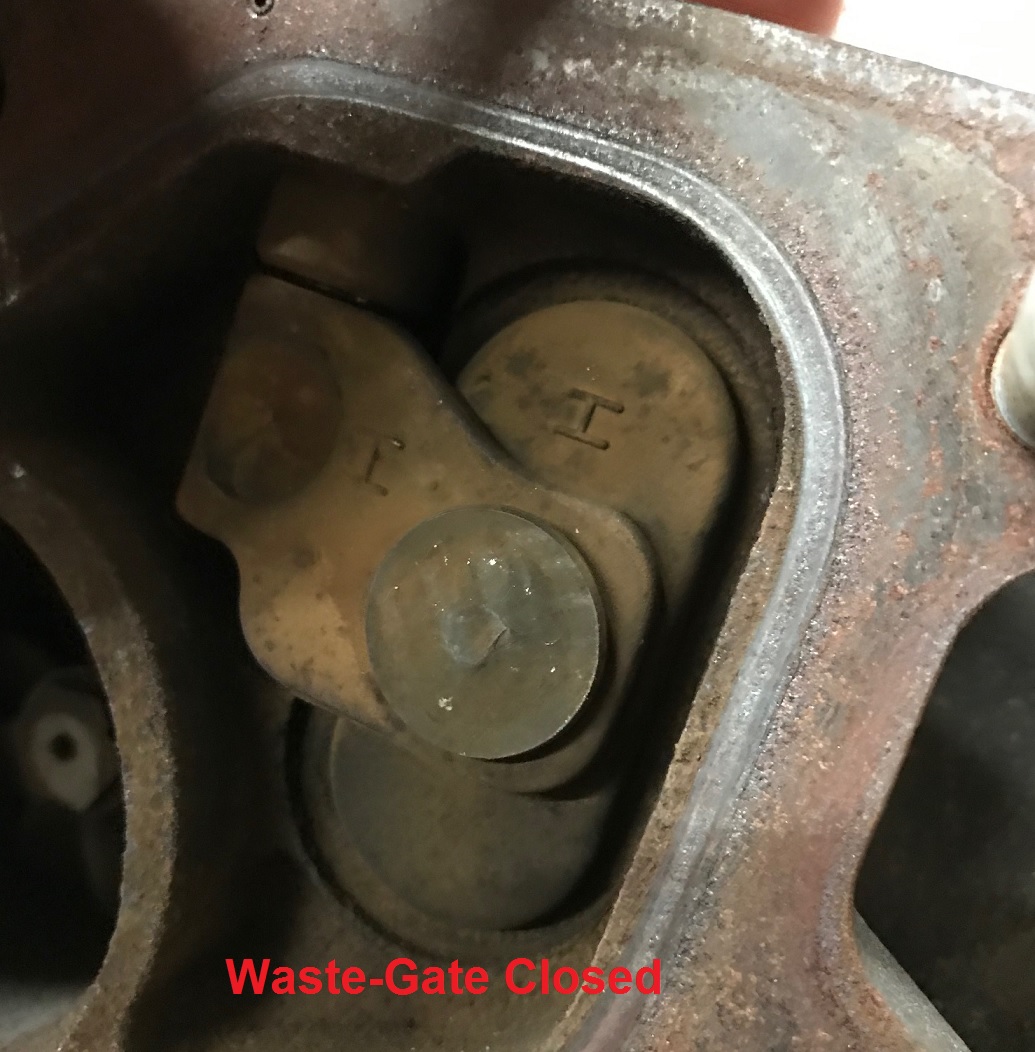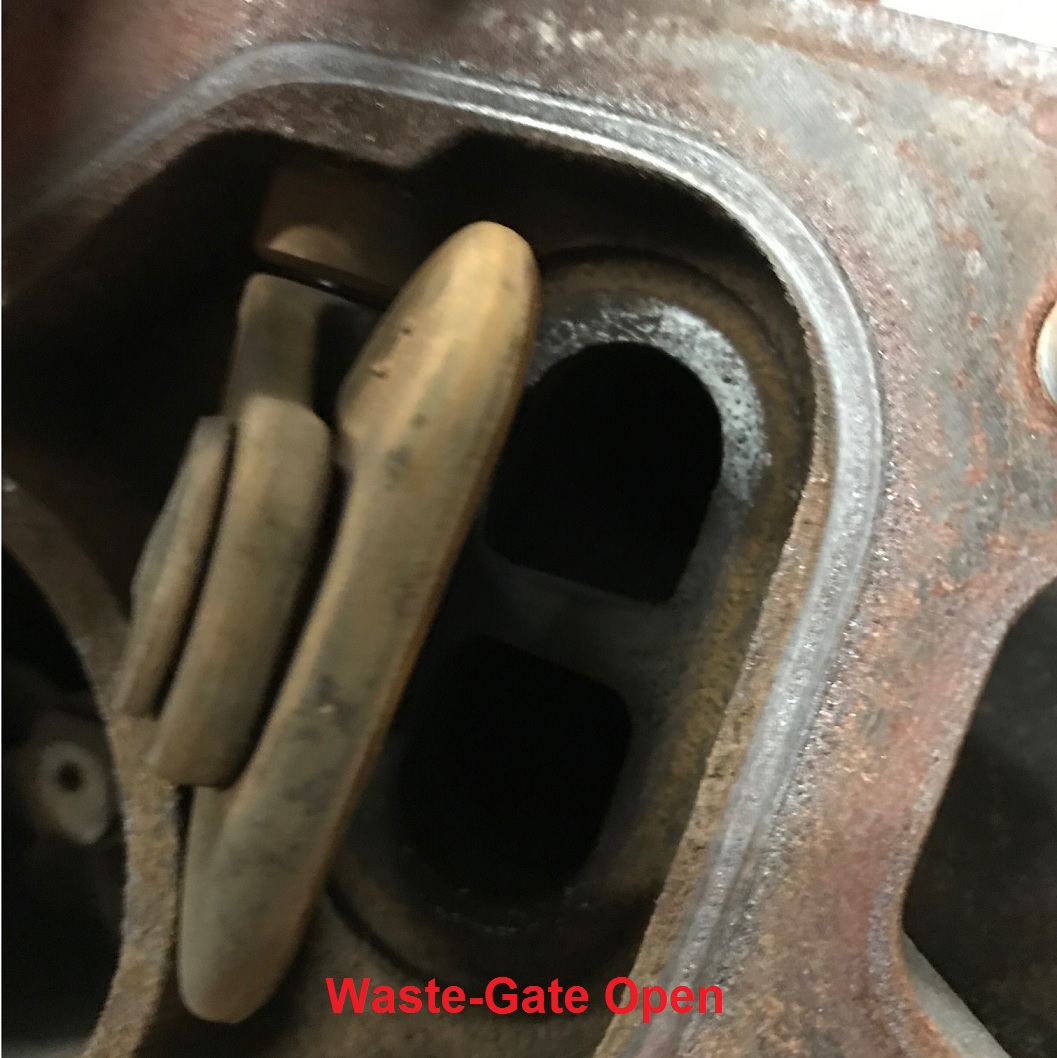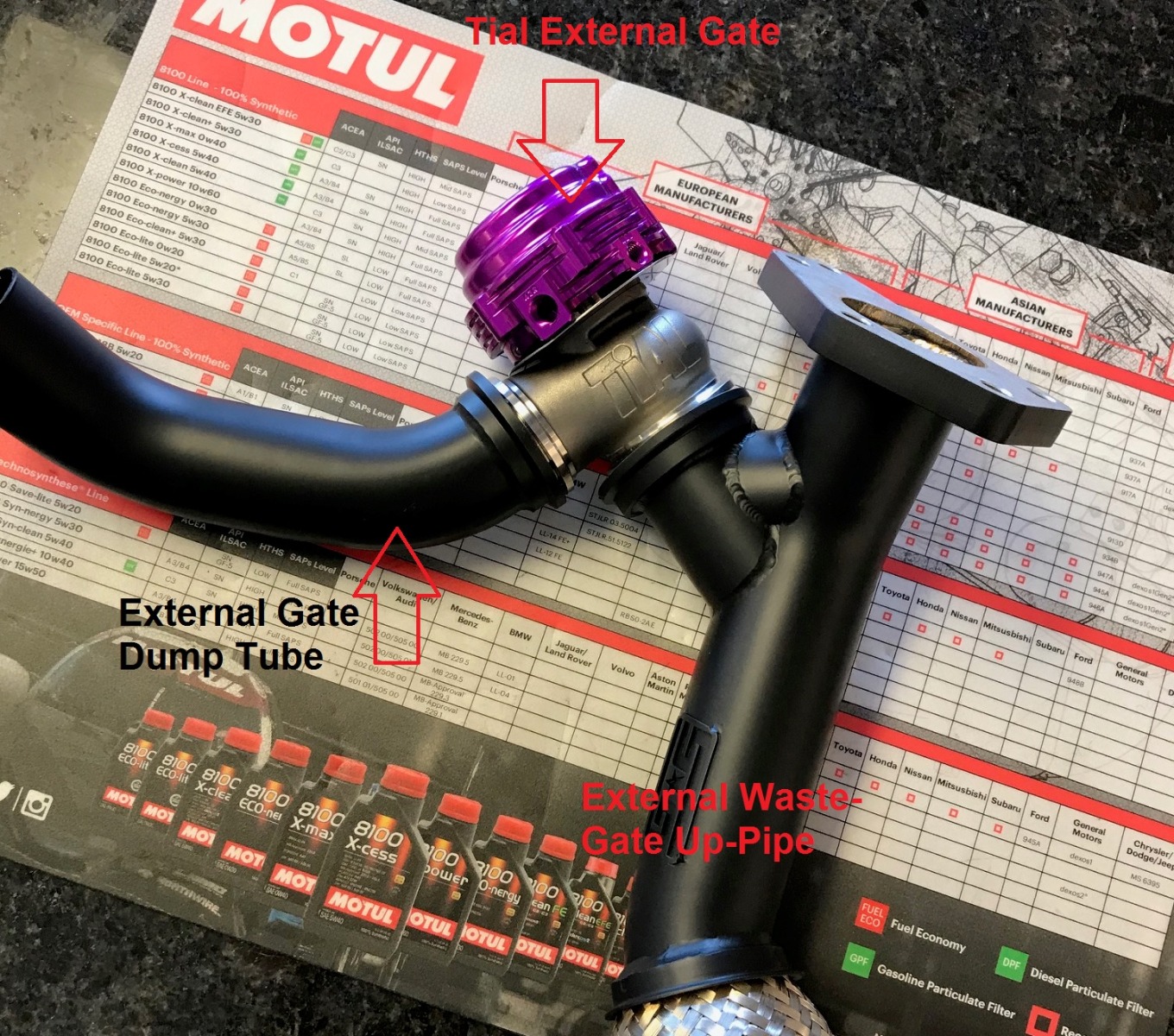We use cookies to make your experience better. To comply with the new e-Privacy directive, we need to ask for your consent to set the cookies. Learn more.
What is an External Waste-Gate and Do I Need One?

If your car has a turbo on it, it already has a waste-gate that is most likely built into the turbo housing itself. This is referred to as an Internal Waste-Gate (or IWG). If you look at the back of the turbo, you will see a small spring-loaded door, and that is the internal waste-gate.
When you are driving your car, exhaust gas is flowing into the turbine housing (or the turbo's hot side), and with the waste-gate shut, all that exhaust gas must go through the turbine wheel. If/when the waste-gate door opens, exhaust gas can bypass the turbine wheel, and go into the exhaust through another route.
When the waste-gate opens, some of the pressure that has built up in the exhaust before the turbo is released. When you are trying to hit a certain target boost pressure target, what you are typically changing is the waste-gate duty cycle. The longer the gate stays shut, the faster boost will build, and once you reach your target boost pressure, the waste-gate will need to open and close to maintain the desired pressure and therefore turbine speed.

One thing worth mentioning here is that waste-gates have a spring to help keep them shut, and manifold pressure is usually used with the spring to either keep the waste-gate shut, or to open it up. Sometimes there are different springs pressures available with a waste-gate, and one thing to keep in mind is that you can only control your boost level once the pressure is over the spring pressure.
So if you have a 15 psi spring in the waste-gate, the ECU will only be able to start controlling boost pressure once you are over that threshold. And if your target boost is close to your spring pressure, then you’ll actually not have much control over how much boost pressure you will hit.
If you are looking at going with an external waste-gate (or EWG), what this does is to replace the function of the internal waste-gate on your turbo with a gate that sits outside of your turbo. To get this to work, you will either need to weld your standard waste-gate shut or put a locking arm on it so that the standard internal waste-gate cannot open. You will also have to either weld on the flange for the external gate before the turbo or install an up-pipe that comes pre-built with an external waste-gate flange.

You will also need to duct the exhaust gas from the EWG to either exit safely under the car, or to re-enter you exhaust.
The main benefit of an external waste-gate is that the exhaust gas that the EWG diverts doesn't have to go through the turbine housing at all since it has a completely separate path. Generally speaking, the smaller the turbine housing is on a turbo, the faster it will spool up. But the tradeoff you make there is that the small turbine housing will then become a restriction sooner in the upper rpm range, which causes your torque to fall of faster. Because the EWG opens up a new path for the exhaust, the penalty for the smaller hot side of the turbo can be largely corrected. In an ideal case, you can get the spool characteristics of a small turbine housing, but still make good power in the upper rpm range.
The opening of the EWG is also typically much larger than the standard waste-gate opening, so in some cases this can give better boost control and prevent an issue called boost-creep where IWG opening can't divert enough exhaust pressure to prevent boost from building (see our article on "What is Boost-creep").

When will an external waste-gate be helpful, and when is it not needed? If you’re able to tune your turbo to your desired boost level with no issues, and you’re able to effectively control boost with no signs of boost-creep, then you most likely don't need an external gate. The possible exception here is if you are seeing a very steep fall-off of torque in the upper rpm range, an EWG set-up may help, but you have the gains against the cost and complexity of adding the EWG.
If you are looking at putting on a completely new turbo set-up, and there isn't a turbo that gives you the exact power-band that you are looking for, or if there are known control issues with the turbo and boost target that you are considering, then adding an external waste-gate to that process may make sense. The best advice here is to talk to your tuner, or the shop you are working with, to see if adding an external waste-gate will make sense for your build. Generally speaking, the biggest benefit tends to come when you pick a turbo with a smaller turbine housing for quick spool paired with an EWG to give better efficiency in the upper rpm range.
One final note on the function of EWGs: When you put on an external gate, you will need to have your car re-tuned to get it to function properly. The standard IWD uses manifold pressure to open the gate, whereas the external gate uses manifold pressure to hold it shut. The EWG basically operates on an opposite duty cycle compared to an IWG. So if you simply install an EWG, more than likely you will not be able to go above your spring pressure until you are tuned for it.
Thanks for reading, and hopefully that helps you make a better choice for your car. And of course, if you have any questions at all, please don't hesitate to reach out!
